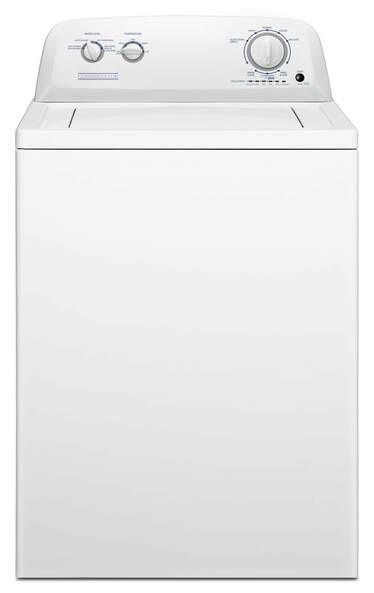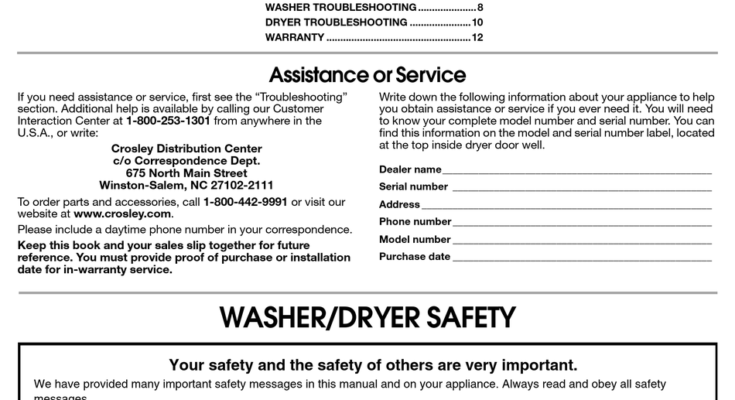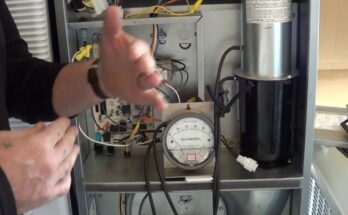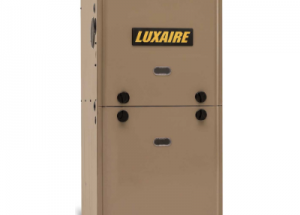Check the power supply and ensure the washer is plugged in securely. Inspect the water inlet hoses for blockages.
Conservator washers are known for their durability and efficiency, but occasionally they may experience issues. Common problems include the washer not starting, water not filling, or unusual noises during operation. These issues can often be resolved with simple troubleshooting steps.
Start by checking the power supply and making sure the washer is properly plugged in. Inspect the water inlet hoses for any blockages or kinks that could restrict water flow. Regular maintenance and timely troubleshooting can extend the life of your washer and ensure it operates smoothly. This guide will help you identify and fix common problems with your Conservator washer.
Washer Not Starting
Is your Conservator washer not starting? This can be frustrating. Before calling a technician, try these troubleshooting steps. They are simple and can save you time and money.
Power Supply Check
First, check if the washer is getting power. Ensure the washer is plugged in. Verify the outlet is working.
| Step | Action |
|---|---|
| 1 | Check the power cord for damage. |
| 2 | Test the outlet with another appliance. |
| 3 | Reset the circuit breaker if needed. |
If the washer still does not start, proceed to the next step.
Door Latch Issues
The door latch must be secure. The washer will not start if it is not.
- Inspect the door latch for damage.
- Ensure the door closes properly.
- Listen for a click when closing the door.
If the door latch is faulty, it may need replacement. This is a common issue and can often be fixed easily.
Following these steps can help solve the problem. Always ensure safety first when troubleshooting electrical appliances.

Credit: www.doityourself.com
Water Not Filling
Is your Conservator washer not filling with water? This issue can disrupt your laundry routine. There are a few simple steps to troubleshoot this problem. This guide will help you solve the issue of your washer not filling with water.
Water Supply Valves
First, check the water supply valves. These valves control the water flow to your washer. They are usually located behind the washer. Make sure both the hot and cold water valves are turned on. If they are off, turn them on and try again.
Sometimes, the valves might be partially open. Ensure they are fully turned on. If the valves are damaged, you might need to replace them. A faulty valve can prevent water from filling the washer. It is important to inspect these valves regularly.
Inlet Hoses
Next, examine the inlet hoses. These hoses connect the water supply to your washer. Over time, they can become kinked or clogged. Check for any bends or blockages in the hoses. If you find any, straighten the hoses or clean them out.
If the hoses are damaged, replace them with new ones. Using damaged hoses can lead to leaks and water flow issues. Ensure the hoses are securely connected to both the washer and the water supply. Loose connections can also cause the washer to not fill with water.
Consider using a table for a quick checklist:
| Component | Check | Action |
|---|---|---|
| Water Supply Valves | Fully open | Turn on or replace |
| Inlet Hoses | Unblocked and undamaged | Straighten or replace |
By following these steps, you can resolve the issue of water not filling in your Conservator washer. Regular maintenance and checks can prevent these problems. Always ensure the water supply and hoses are in good condition.
Water Not Draining
Having trouble with your Conservator washer not draining can be frustrating. This issue can stop your laundry routine. Let’s look at how you can fix this. Check the drain hose and clean the pump filter.
Drain Hose Inspection
The drain hose is a common cause of drainage issues. A kink or blockage can stop the water from flowing out. Follow these steps to inspect the drain hose:
- Unplug the washer for safety.
- Locate the drain hose at the back of the washer.
- Check for any bends, kinks, or twists.
- Remove the hose from the washer and inspect it for blockages.
- If blocked, clear the blockage using a long brush or similar tool.
- Reattach the drain hose, ensuring it is straight.
Pump Filter Cleaning
A clogged pump filter can also cause water to not drain. Cleaning it can restore proper drainage. Here’s how to do it:
- Unplug the washer and locate the pump filter.
- The pump filter is usually at the bottom front of the washer.
- Open the access panel to reach the filter.
- Place a towel or shallow tray under the filter to catch water.
- Twist the filter counterclockwise to remove it.
- Clean the filter under running water. Remove any debris.
- Reinstall the filter and close the access panel.
These steps should help with your washer’s drainage problem. Regular maintenance can prevent future issues. Happy washing!
Washer Not Spinning
Is your washer not spinning? This can be frustrating. A washer not spinning can leave your clothes soaked. Let’s explore some common causes and solutions.
Balance Load
A washer may not spin if the load is unbalanced. A balanced load helps the washer spin properly. Follow these steps to balance the load:
- Open the washer and redistribute clothes evenly.
- Remove any heavy items.
- Try to mix large and small items.
Remember, a balanced load keeps the washer spinning smoothly.
Drive Belt Check
The drive belt might be the issue if the washer doesn’t spin. A broken or loose belt can stop the spinning. Follow these steps to check the drive belt:
- Unplug the washer for safety.
- Remove the back panel of the washer.
- Inspect the drive belt for any signs of damage.
- If damaged, replace the belt.
Ensuring the drive belt is intact helps the washer spin effectively.
| Issue | Solution |
|---|---|
| Unbalanced Load | Redistribute clothes evenly |
| Drive Belt | Check and replace if needed |
Excessive Vibration
Experiencing excessive vibration in your Conservator washer can be frustrating. This issue can lead to noise, potential damage, and inefficient washing. Understanding the causes of excessive vibration is essential for maintaining your washer’s performance.
Leveling Feet
The leveling feet of your washer play a crucial role. They ensure the washer remains stable during operation. If the leveling feet are not adjusted properly, the washer will vibrate excessively.
- Check if all feet are touching the ground.
- Adjust each foot until the washer is level.
- Use a bubble level to verify the balance.
Correctly adjusted feet reduce vibration and noise. It also prolongs the machine’s lifespan.
Load Distribution
Load distribution is another critical factor. Uneven loads can cause the washer to vibrate excessively.
- Ensure clothes are evenly distributed in the drum.
- Avoid overloading the washer.
- Wash bulky items with smaller ones to balance the load.
Balanced loads ensure smoother operation. This minimizes vibration and enhances washing efficiency.
| Issue | Solution |
|---|---|
| Unbalanced Load | Redistribute clothes evenly. |
| Leveling Feet | Adjust feet to ensure stability. |
Addressing these factors helps maintain a smooth, quiet wash cycle. Keep your washer in top condition by regularly checking the leveling feet and load distribution.

Credit: www.youtube.com
Unusual Noises
Unusual noises from your Conservator washer can be alarming. These noises indicate potential issues. Identifying the source helps in fixing the problem.
Foreign Objects
Foreign objects can cause strange sounds in your washer. These objects may be small items like coins or buttons. They often get stuck in the drum or pump.
- Check the drum for any small items.
- Inspect the pump for blockages.
- Remove any foreign objects you find.
Regularly check pockets before washing. This simple step prevents many issues.
Bearing Issues
Bearing issues cause loud, grinding noises. Bearings support the drum’s rotation. Over time, they wear out and make noise.
| Symptom | Possible Cause |
|---|---|
| Loud grinding noise | Worn-out bearings |
| Drum not spinning properly | Damaged bearings |
- Turn off the washer and unplug it.
- Inspect the bearings for wear.
- Replace worn-out bearings if needed.
Regular maintenance extends bearing life. Always follow the user manual for guidance.
Leaking Water
Experiencing leaking water from your Conservator washer can be frustrating. This issue often stems from a few common problems. By identifying the source, you can save time and avoid costly repairs. Let’s dive into two main areas: the door seal and hose connections.
Door Seal
The door seal, or gasket, is a common culprit for leaks. Over time, it can wear out or get damaged. Inspect the seal for any visible tears or dirt build-up.
- Clean the seal regularly to prevent dirt accumulation.
- Check for any visible cracks or tears.
- Replace the seal if it’s damaged.
To clean the seal, use a mild detergent and a soft cloth. Gently wipe around the seal to remove any dirt or residue. This simple step can prevent future leaks.
Hose Connections
Another common source of water leaks is the hose connections. These can loosen over time, causing water to escape. Inspect the hoses for any signs of wear or damage.
| Hose Type | Check Points |
|---|---|
| Inlet Hose | Tighten connections, check for cracks or wear |
| Drain Hose | Ensure it’s properly secured, check for blockages |
Ensure all hose connections are tight. Replace any hoses that show signs of wear. Regular maintenance can prevent leaks and extend the life of your washer.
Detergent Dispenser Problems
The detergent dispenser in your Conservator washer is crucial. It ensures your clothes get clean. But, it can face problems. Two common issues are a clogged dispenser and improper detergent use. Let’s dive into these problems and their solutions.
Clogged Dispenser
A clogged dispenser stops detergent from reaching your clothes. This can lead to poorly washed clothes. Here’s how to fix it:
- Remove the dispenser tray.
- Soak it in warm water for 10 minutes.
- Use a soft brush to clean any residue.
- Rinse and dry the tray.
- Place the tray back in the washer.
Repeat this cleaning once a month. It keeps your dispenser working well.
Proper Detergent Use
Using the right detergent is key. Here’s a quick guide:
| Detergent Type | Use |
|---|---|
| Liquid Detergent | Pour into the marked compartment. |
| Powder Detergent | Use the powder compartment only. |
| Pod Detergent | Place directly in the drum. |
Overloading the dispenser can cause issues. Always follow the recommended amounts. This prevents clogs and ensures your clothes are clean.
If you see soap residue, you might be using too much detergent. Adjust the amount for better results.

Credit: www.conservatorappliances.com
Frequently Asked Questions
How Do You Reset A Conservator Washer?
To reset a Conservator washer, unplug it for one minute. Plug it back in and select a wash cycle. Press and hold the “Start” button for five seconds to reset.
How To Reset A Washing Machine?
Unplug the washing machine for 1 minute. Plug it back in. Press and hold the power button for 5 seconds. Select a cycle and start the machine.
Why Is My Conservator Washer Not Filling With Water?
Your conservator washer might not fill with water due to clogged filters, faulty water inlet valves, or a malfunctioning pressure switch. Check these components and clean or replace them as needed.
Why Wont My Washer Cycle Through?
Your washer may not cycle due to a faulty timer, blocked drain, or broken lid switch. Check these components.
Conclusion
Solving Conservator washer issues can be simple with the right guidance. Regular maintenance prevents many common problems. Use our troubleshooting tips to keep your washer running smoothly. Save time and money by addressing minor issues yourself. For persistent problems, contact a professional.
A well-maintained washer ensures longevity and efficiency.



